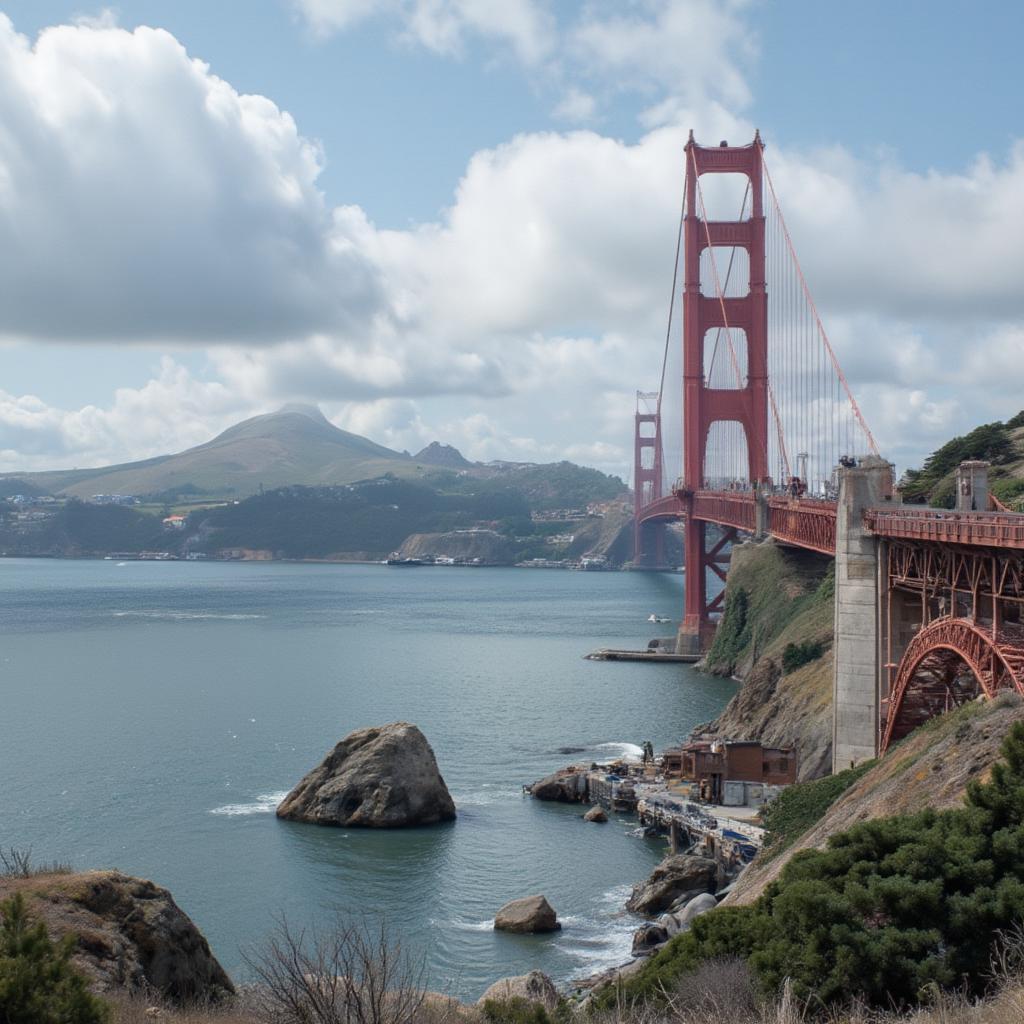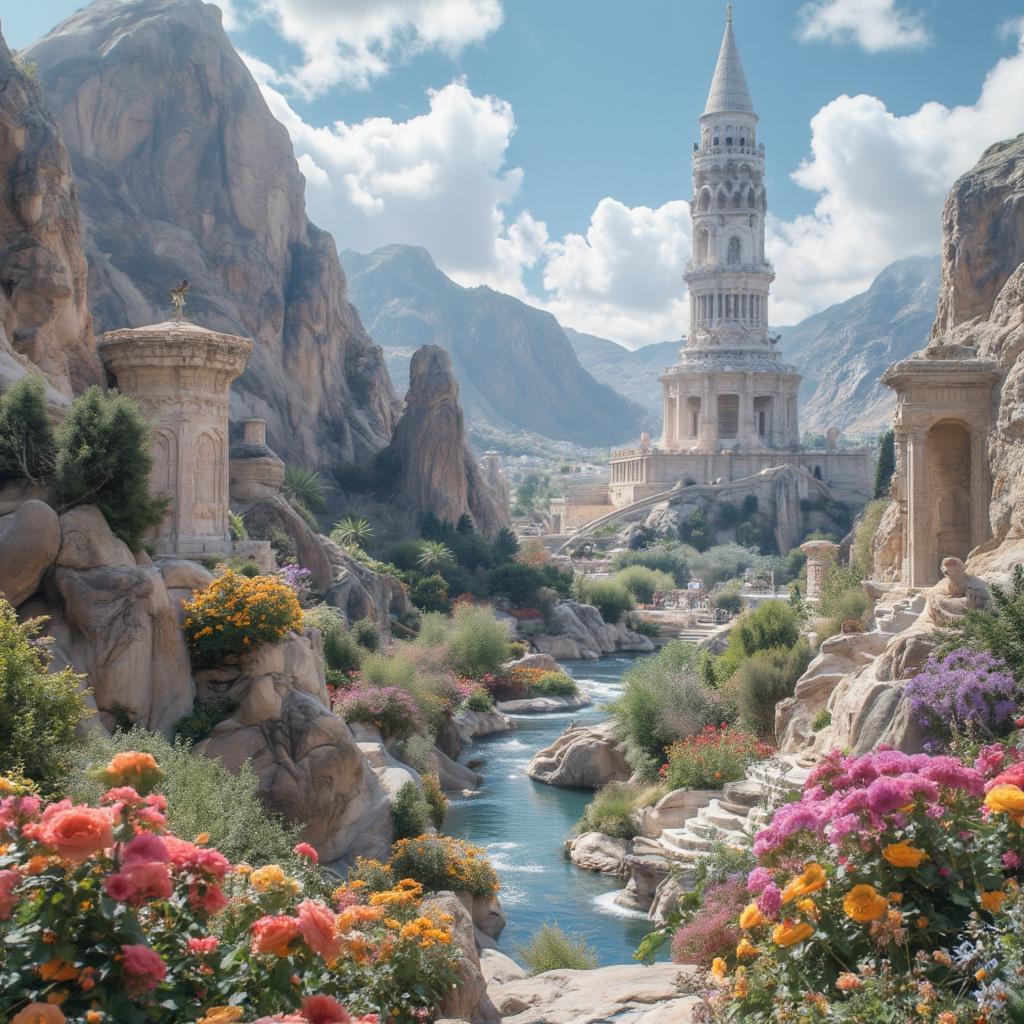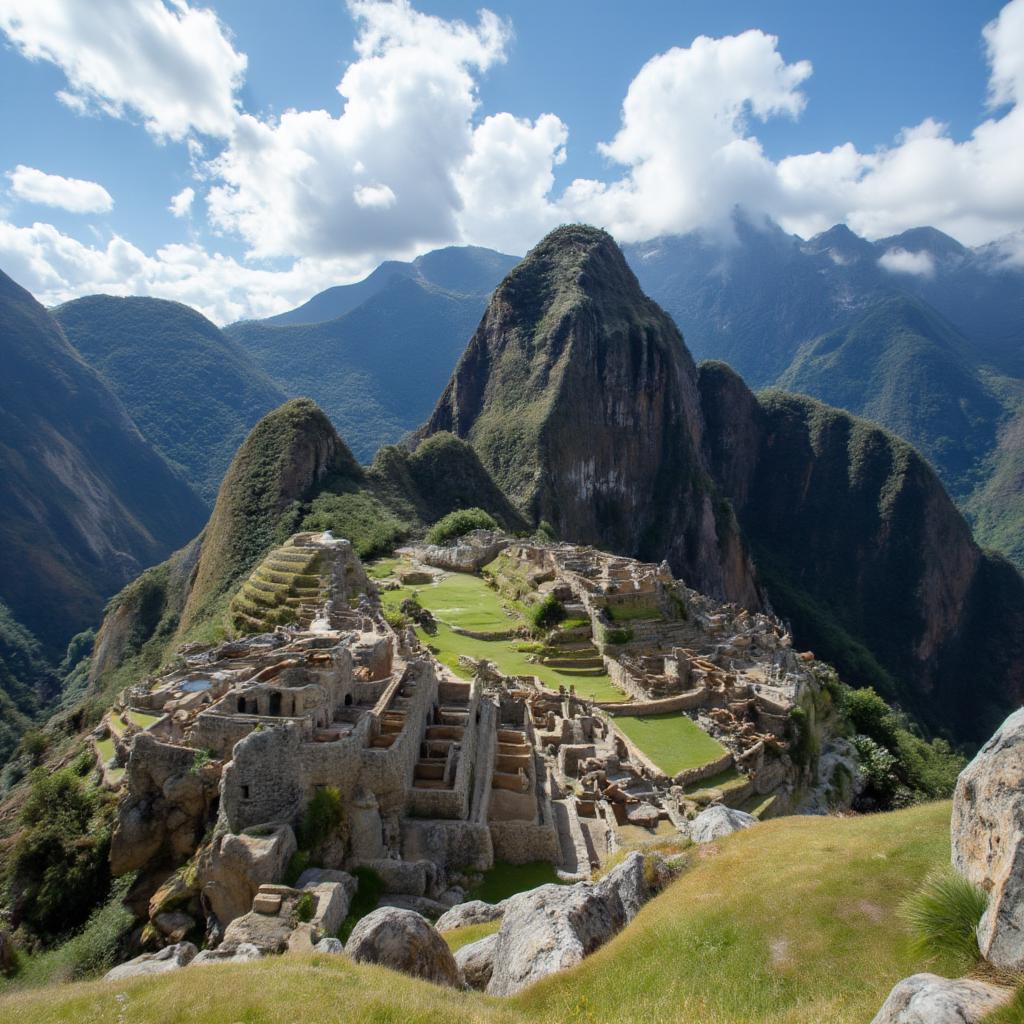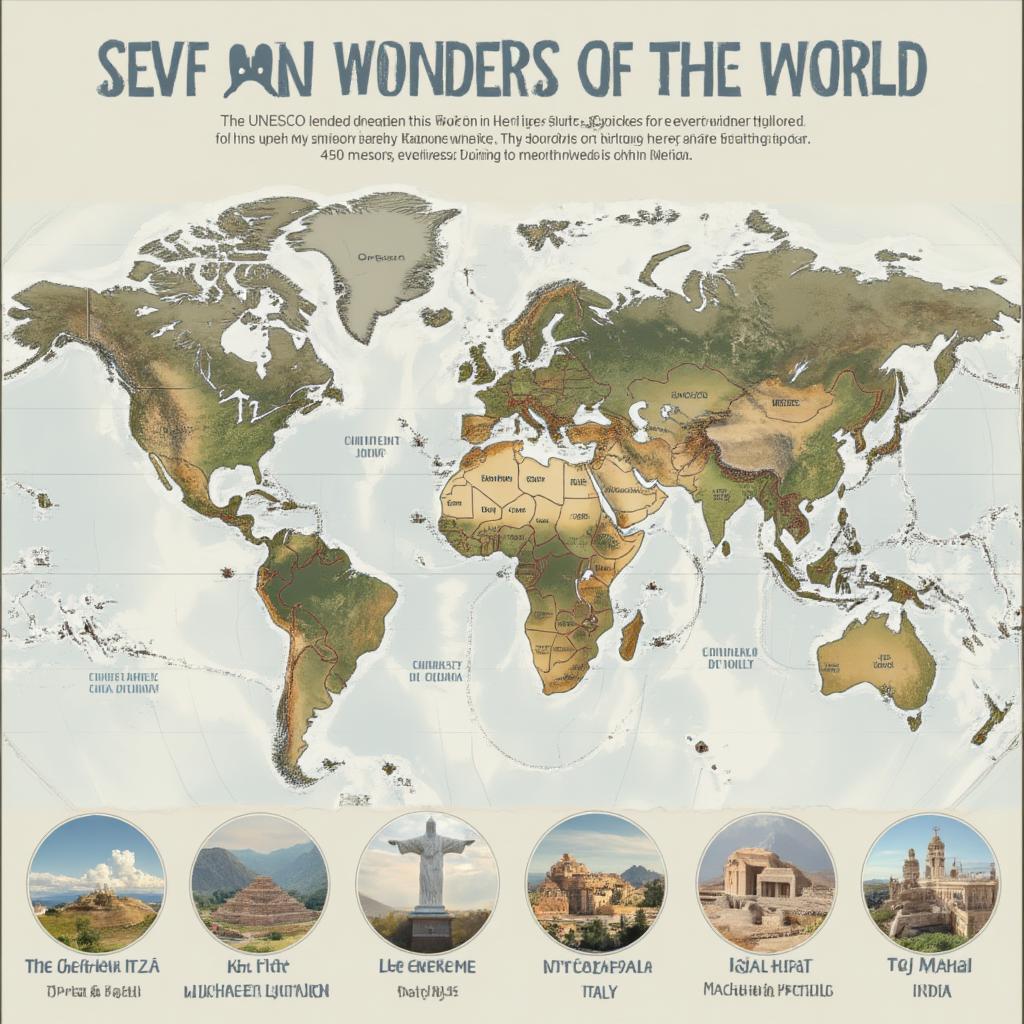The Golden Gate Bridge: Not One of the 7 Wonders, but Still a Wonder

Many people mistakenly associate the Golden Gate Bridge with the Seven Wonders of the World. While it’s not an ancient wonder, this iconic San Francisco landmark possesses a majestic presence and engineering marvel that makes it a modern-day wonder in its own right. Let’s explore why, despite not being a part of the official Seven Wonders, the Golden Gate Bridge remains an extraordinary feat of human achievement.
Why Isn’t the Golden Gate Bridge One of the 7 Wonders of the World?
The confusion often arises from the existence of different “lists” of wonders throughout history. The most well-known list, the Seven Wonders of the Ancient World, includes monuments like the Great Pyramid of Giza, the Hanging Gardens of Babylon, and the Colossus of Rhodes. These were all constructed centuries, even millennia, before the Golden Gate Bridge. The Golden Gate, built in the 20th century, simply wasn’t around during the time those lists were compiled.
It’s important to understand that the Seven Wonders of the Ancient World were primarily chosen based on their architectural and artistic merit, as well as their immense scale, and many of them no longer exist today. The selection criteria for ancient wonders were based on the perspectives and knowledge of the times. Today, we have more advanced materials and engineering techniques, which allow us to build structures like the Golden Gate Bridge.
Exploring the Actual 7 Wonders of the World
So if the Golden Gate isn’t one of them, what are the real Seven Wonders of the World? The original list includes:
- The Great Pyramid of Giza (Egypt): The only one of the original Seven Wonders still standing today. It showcases the incredible engineering prowess of ancient Egyptians.
- The Hanging Gardens of Babylon (Mesopotamia): A legendary feat of engineering said to have been built by King Nebuchadnezzar II for his wife. Unfortunately, its exact location and existence have always been debated.
- The Statue of Zeus at Olympia (Greece): A massive, 40-foot-tall gold and ivory statue, which was considered one of the greatest works of art in antiquity. It no longer exists.
- The Temple of Artemis at Ephesus (Turkey): A temple dedicated to the Greek goddess Artemis, it was rebuilt multiple times, each time grander than the last. Only ruins remain today.
- The Mausoleum at Halicarnassus (Turkey): An elaborate tomb built for Mausolus, a satrap in the Persian Empire, it is the origin of the word “mausoleum.” Only some of its ruins exist today.
- The Colossus of Rhodes (Greece): A massive bronze statue of the Greek sun god Helios, standing over 100 feet tall, it is said that ships sailed between its legs. It was destroyed by an earthquake.
- The Lighthouse of Alexandria (Egypt): A towering lighthouse that guided ships into the bustling port of Alexandria. It was one of the tallest man-made structures of its time, now only some ruins remain.
It’s worth noting that there’s also a modern list of the Seven Wonders of the World, which was compiled in 2007 and includes structures like the Great Wall of China, Chichen Itza, and the Taj Mahal. But the Golden Gate Bridge also did not make this list.

The Golden Gate Bridge: A Marvel of Modern Engineering
While not on the official list, the Golden Gate Bridge is undoubtedly a modern engineering marvel. Its construction was a massive undertaking for its time. Consider these facts:
- Immense Scale: The bridge is 1.7 miles long and suspends 220 feet above the water, a feat for any era.
- Seismic Design: Built in an earthquake-prone zone, its structure was designed to withstand powerful tremors, showcasing excellent earthquake engineering.
- Art Deco Design: The bridge has a distinctive Art Deco design, a testament to the aesthetics of the time.
- Unique Color: Its “International Orange” color isn’t just for show – it’s specially formulated to complement the natural surroundings, contrasting with the green of the landscape and the blue of the sea and sky.
- A Symbol of Resilience: It took four years to build and it still stands as a testament to human determination and ingenuity.
“The Golden Gate Bridge represents a significant advancement in engineering, blending functionality with artistic elegance. It embodies a spirit of innovation that continues to inspire engineers around the world.” – Dr. Alistair Finch, Structural Engineering Professor, University of California at Berkeley.
What Makes the Golden Gate Bridge Special?
Beyond the sheer engineering, several factors contribute to the Golden Gate Bridge’s iconic status and what makes it stand out:
- Iconic Symbolism: The Golden Gate Bridge is a cultural symbol, recognized worldwide as representing San Francisco and the American West. It is often seen in movies, television shows, and advertisements.
- Photographic Beauty: The bridge’s striking color, dramatic setting, and imposing structure make it an incredibly popular subject for photography.
- Tourist Magnet: It’s a major tourist attraction, with millions of people visiting each year to experience its grandeur.
- Connection and Access: The bridge provides a vital transportation link, connecting San Francisco to Marin County. It also has a dedicated pedestrian and bicycle lane allowing for all types of visitors to enjoy it.
Can You Walk or Bike Across the Golden Gate Bridge?
Yes! A dedicated pedestrian and bike path allows you to experience the bridge up close. Here’s what you can expect:
- Access: Enter from either the San Francisco side or the Marin County side.
- Pathways: The pedestrian walkway is on the east side, while the bicycle path runs on the west side. Both offer fantastic views.
- Experience: Walk or bike the full 1.7-mile length or simply part of it.
- Photo opportunities: Bring your camera as you’ll find plenty of great spots for photos.
- Safety: Stay within the marked path, especially on windy days.
The Golden Gate Bridge vs. Ancient Wonders: A Modern Perspective
While the Golden Gate Bridge was built much later than the ancient wonders, comparing them reveals interesting aspects of human ingenuity across different eras.
Ancient wonders represent the limitations and innovative spirit of their time. Built with basic tools and materials, they showcase remarkable feats of human organization and skill. The Great Pyramid, for example, shows immense labor and precision. The Golden Gate Bridge, conversely, exemplifies modern engineering using advanced technology and materials.
Today we measure human progress in different ways, from sustainability and energy efficiency, to social impacts and environmental concerns, and the Golden Gate Bridge, despite not being a wonder on an ancient list, still remains a testament to human achievement.
Did the Golden Gate Bridge face Any Challenges?
Yes, the construction of the Golden Gate Bridge was a difficult undertaking. The site presented many engineering challenges:
- Strong Currents: The location is known for powerful tides and strong ocean currents, which made building bridge foundations incredibly difficult.
- Fog and Winds: Regular fog, high winds, and seismic activity were all factors that demanded innovative design and construction techniques.
- Great Depth: The water at the bridge’s location was deep, which required significant engineering expertise for building the supporting foundations.
- Material Limitations: The sheer scale of the bridge demanded massive quantities of steel and other materials, all of which had to be produced and transported to the construction site.
- The Great Depression: The project was undertaken in the 1930’s during the Great Depression, which presented significant financial challenges for the project.
“The challenges encountered during the construction of the Golden Gate Bridge were monumental. The engineers had to overcome numerous obstacles, including high winds, strong currents, and difficult bedrock conditions. The successful completion of this project serves as a powerful testament to the human capacity for innovation and perseverance.” – Professor Evelyn Reed, Civil Engineering History, Stanford University
Is it Worth Visiting the Golden Gate Bridge if it’s Not a Wonder?
Absolutely! It may not be a Seven Wonders of the World landmark, but the Golden Gate Bridge is a destination worth exploring. Its iconic design, striking vistas, and monumental scale make for an unforgettable experience. Whether you walk, bike, or drive across it, or view it from afar, it offers a unique glimpse into human ingenuity.
Why Does the Confusion About the 7 Wonders and the Golden Gate Bridge Still Exist?
The confusion might stem from a few things. First, “Seven Wonders” lists are popular, and sometimes people loosely use the term for any incredible structure. Second, the Golden Gate Bridge is undeniably amazing, and the term “wonder” is often associated with it. Finally, its popularity means its image and grandeur permeates popular culture. People often think of the most spectacular sites that are recognizable around the world and the Golden Gate fits this description.
The term “wonder of the world” is often used to describe places that invoke awe, even though the reference is usually to the ancient world list. The Golden Gate Bridge fits this criteria perfectly.
Conclusion: The Golden Gate Bridge, a Modern Marvel
While the Golden Gate Bridge is not one of the Seven Wonders of the World, it remains a modern marvel of engineering and a symbol of human achievement. Its iconic design, grand scale, and stunning location make it a must-see destination for travelers. The bridge is much more than just a crossing; it is a landmark that embodies innovation, artistry, and human connection. It serves as a powerful reminder that wonders can be built in any era, not just in ancient times. Take some time to appreciate its beauty and its unique history. It may not be on an official list, but it is, undoubtedly, a wonder.




